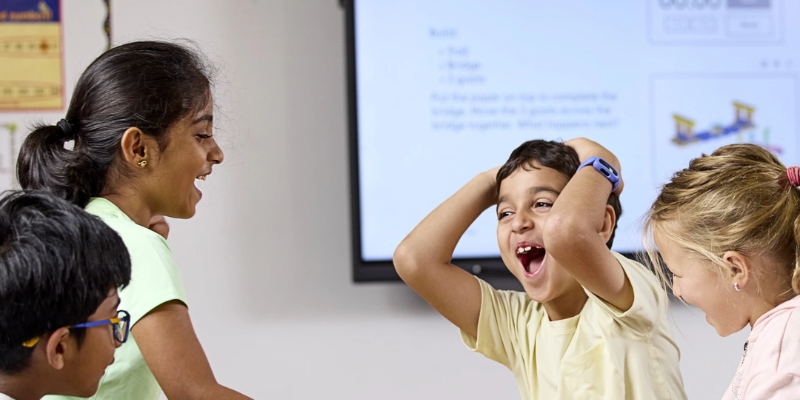Science becomes truly exciting when students can connect classroom concepts to the world they see around them. Real-World Science with LEGO Education brings real-world phenomena into focus by making abstract ideas—such as forces, energy, and weather—tangible and engaging. Through playful, hands-on exploration, learners not only understand scientific principles but also develop the confidence to see themselves as future innovators.
Making Abstract Concepts Concrete
For many students, scientific theories can feel distant and hard to grasp. Real-World Science with LEGO Education bridges that gap by turning invisible forces into interactive experiments. Imagine students investigating how friction affects motion, building simple models to explore energy transfer, or examining weather patterns through creative simulations. These hands-on activities help learners physically observe and manipulate the concepts they’re studying, making science meaningful and memorable.
When students build and test their models, they move beyond memorization to active understanding. They can experiment with cause and effect, compare predictions to results, and refine their ideas—a natural and exciting way to learn scientific thinking.
Boosting Engagement and Retention Through Hands-On Learning
Research consistently shows that students retain more knowledge when they learn by doing. LEGO® Education Science is designed around this principle, offering a playful yet purposeful approach that strengthens engagement and long-term comprehension. Instead of simply reading about energy or observing a demonstration, students actively construct their understanding by designing, building, and experimenting.
This collaborative, hands-on learning environment also nurtures critical 21st-century skills such as problem-solving, teamwork, and creativity. By encouraging exploration and iteration, LEGO Education Science empowers students to take ownership of their learning and develop confidence in their scientific abilities.
Connecting Science to Everyday Life
One of the greatest strengths of LEGO® Education Science is its ability to make science feel relevant. Each activity links to real-world contexts, showing students how the concepts they explore affect their daily lives and the world around them.
- Energy and Sustainability: Build and test wind- or solar-powered models to understand renewable energy.
- Forces and Motion: Investigate how cars slow down or speed up, connecting to transportation and safety.
- Weather and Climate: Create simple weather station models to explore patterns and environmental changes.
By grounding lessons in topics students encounter in their communities—like energy efficiency or weather forecasting—teachers can inspire learners to see science as both exciting and useful.
Inspiring the Next Generation of Scientists
LEGO® Education Science does more than teach facts; it helps students envision themselves as active participants in science and technology. Through hands-on investigations, they build confidence in their ability to ask questions, test ideas, and make discoveries. This sense of empowerment is crucial for nurturing a lifelong interest in STEM fields.
The kit’s open-ended design encourages creativity and fosters a growth mindset. When students are given the freedom to experiment, they learn that mistakes are not failures but stepping stones to new understanding. This mindset prepares them for the challenges of future careers in science, engineering, and beyond.
Bringing Real-World Science to Your Classroom
Teachers who integrate LEGO® Education Science into their classrooms gain more than a set of engaging activities; they unlock a dynamic way to connect learners with the world around them. Lessons become collaborative explorations where abstract concepts come to life, and students gain both knowledge and confidence in their scientific skills.
By turning scientific principles into hands-on experiences, LEGO® Education Science bridges the gap between classroom learning and real-world application—transforming students into curious, capable, and future-ready scientists.

